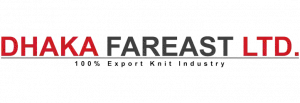Bangladesh is now a key player in sportswear production. It has become a leader in the global apparel industry. The country’s success is thanks to its strategic growth, innovation, and resilience.
Building a Strong Textile Foundation
Bangladesh’s growth in sportswear started with a strong textile industry. In the 1980s and 1990s, it boosted its textile sector by investing in modern machinery and tech. This move made it possible to produce high-quality fabrics. Local materials also cut costs and production times. As a result, Bangladesh became a top choice for international brands.
Competitive Labor Costs
Bangladesh’s low labor costs attracted global sportswear brands. It had many skilled workers who accepted lower pay than elsewhere. This allowed for affordable sportswear production. Thus, brands could cut costs but still ensure quality.
Founding a Business-Friendly Environment
The Bangladeshi government made the country attractive to apparel sector investors. It offered tax breaks, allowed duty-free raw material imports, and pushed for export growth. These policies simplified setting up and running factories. Additionally, it created Export Processing Zones (EPZs) with modern facilities and easier regulations. This strategy also drew in foreign investments.
Focusing on Quality and Compliance
As the demand for high-performance sportswear rose, Bangladesh improved its manufacturing. Factories now use better tech and meet global quality standards. They also follow labor and environmental laws. This ensures the sportswear meets international demands.
Building Strategic Partnerships
Bangladesh’s sportswear industry thrived with partnerships. It gained top technology, designs, and production methods. Brands like Nike, Adidas, and Puma started sourcing heavily from Bangladesh. This move boosted the country’s global reputation for quality.
Investing in Skill Development
Bangladesh aimed to boost its sportswear industry by investing in skill development. It set up training centers and vocational institutes. These were crucial for teaching workers advanced techniques. The focus was on continuous learning. This strategy ensured workers could make top-notch sportswear. It also helped them meet the industry’s changing needs.
Approval Sustainability
In recent years, the global apparel industry has focused on sustainability. Bangladesh, in particular, has made strides in sustainable sportswear manufacturing. Factories there now use eco-friendly tech, cut waste, and save energy. Many have also gained certifications like LEED and follow the High Index. This shows their commitment to sustainability. It also attracts eco-conscious brands.
Growing Export Markets
Bangladesh’s sportswear industry is growing. It is exploring new markets and increasing its customer base. This move also makes the industry less vulnerable to economic shifts in specific regions.
The Road Ahead
Bangladesh’s success in sportswear shows its strategic planning and quality focus. It adapts well to global trends. First, it built a strong textile industry. Then, it used competitive labor costs. It also ensures a business-friendly climate. Moreover, it focuses on quality and compliance. Besides, it forms key partnerships and invests in skill development. It also emphasizes sustainability. Lastly, it grows its export markets. This strategy has made Bangladesh a major player in global sportswear.

